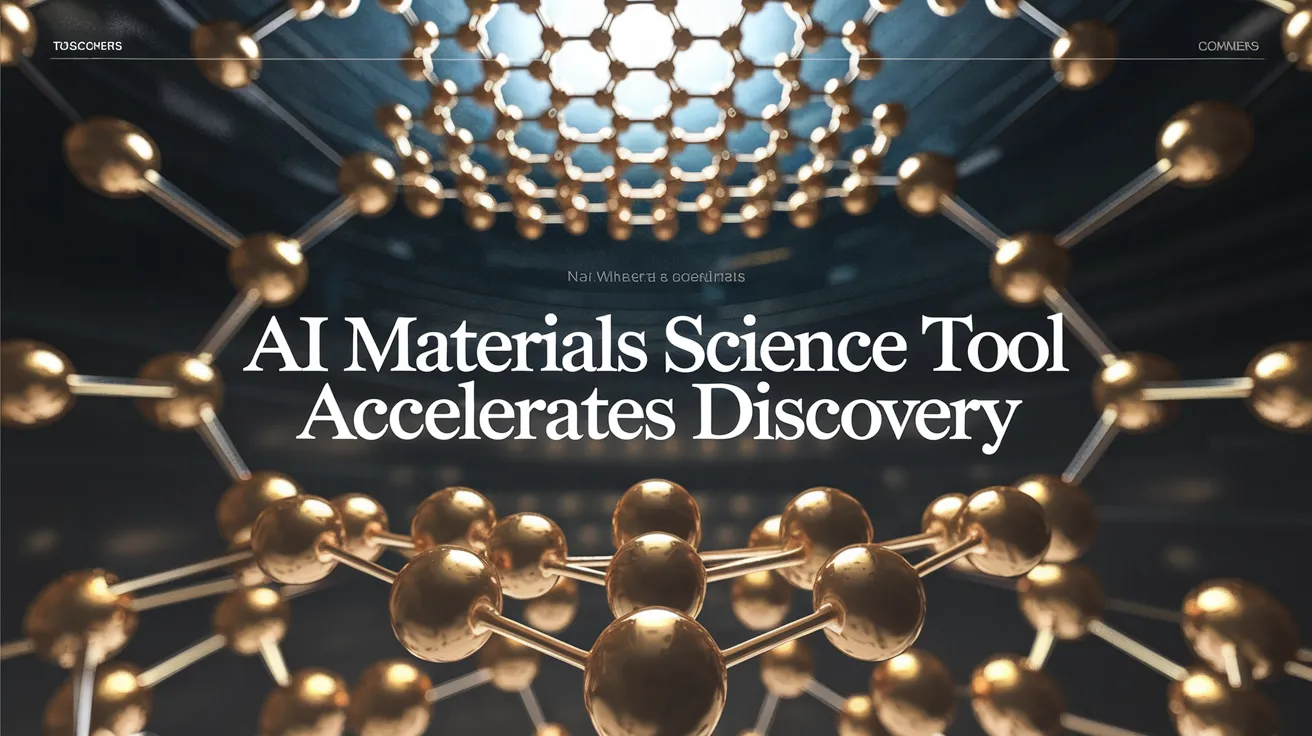AI Materials Science Tool Accelerates Discovery

A Johns Hopkins University engineer has developed a specialized AI tool designed to revolutionize materials science, much like how ChatGPT has transformed coding and writing. Named the ChatGPT Materials Explorer (CME), this innovative system aims to expedite the discovery of advanced technologies such as improved batteries and stronger alloys. The findings regarding CME are detailed in the journal Integrating Materials and Manufacturing Innovation.
Professor Kamal Choudhary, a key figure in this development, likens the CME to a proficient research assistant meticulously trained to navigate extensive databases. It can predict material behaviors without the need for physical testing, sift through scientific literature to locate relevant studies, and assist with scientific writing. Choudhary’s firsthand experience with AI inspired CME’s creation, especially his interactions with ChatGPT.
Choudhary shared his challenges in researching superconductors—a class of materials that conduct electricity with zero resistance. He recalled asking ChatGPT to design a superconductor and received a generic and ultimately incorrect response. Such inaccuracies are known as “hallucinations,” where AI presents misleading information as if it were factual. This phenomenon is concerning, with estimates suggesting a hallucination rate in ChatGPT of between 10% and 39%.
According to Choudhary, the source of these inaccuracies lies in the foundational data that AI models utilize. ”Hallucinations occur because ChatGPT lacks a true understanding of facts. When it fails to retrieve specific data, it often produces plausible-sounding but incorrect information. Many AI training datasets, such as Wikipedia, do not integrate the latest research findings in materials science, enhanced by CME’s unique access to specialized scientific databases. Consequently, CME can deliver reliable insights sought by materials scientists.
To construct this specialized language model, Choudhary utilized the ChatGPT builder feature, initially outlining the AI’s purpose and setting its operating parameters. The integration with relevant scientific databases was crucial; unlike generic interactions with ChatGPT, CME provides accurate molecular structures and other critical data relevant to materials science.
The incorporation of databases like the National Institute of Standards and Technology’s JARVIS, the NIH’s CACTUS, and the Materials Project ensures that CME consistently updates with current research. Choudhary emphasized, “Materials Explorer is reliable because it automatically retrieves information from the latest publications and journals.”
In a comparison to ChatGPT-4 and ChemCrow—another AI focused on chemistry—CME demonstrated a notable advantage. In tasks ranging from providing the molecular formula for aspirin to interpreting phase diagrams, CME achieved a perfect score, whereas the other models fell short.
Looking ahead, Choudhary intends to enhance CME further by introducing advanced materials modeling capabilities, automating literature reviews, and developing an open-source platform named AtomGPT.org. This initiative contrasts with CME’s closed-source model, granting select users the ability to modify code and optimize responses for materials science queries.
Ultimately, Choudhary’s ambition is for ChatGPT Materials Explorer to become the definitive research assistant for materials scientists, facilitating computer simulations, data analysis, and more integrated approaches to advance the field. What began as a weekend project is maturing into a vital resource for the materials science community.